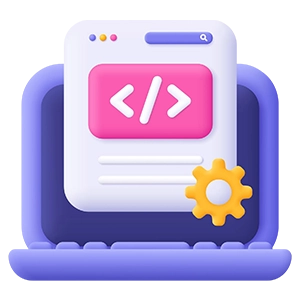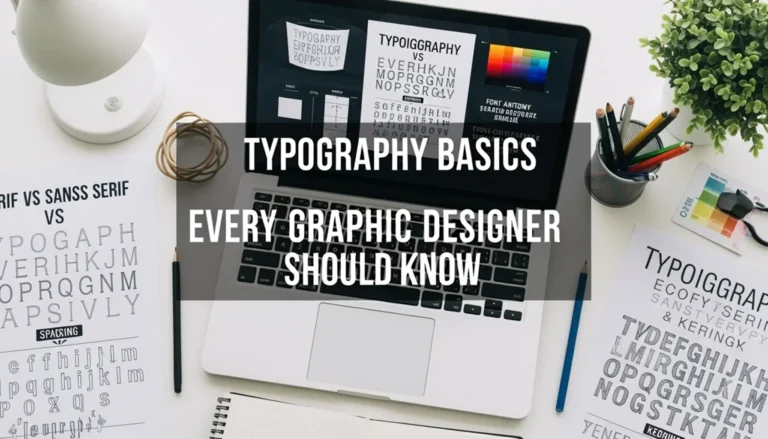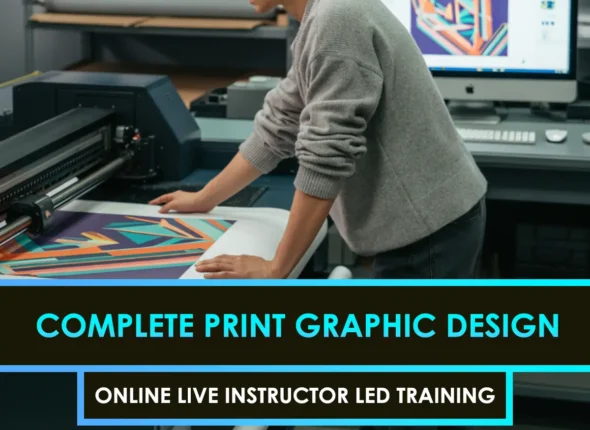Understanding Typography Basics
Importance of Typography in Graphic Design
Have you ever come across a design that seems to shout, “Look at me!”? That could be the result of effective typography in action. Typography is not just about attractive lettering; it’s a fundamental element of graphic design. When executed well, it enhances readability, organizes information by importance, and builds a connection with the audience. Typography plays a crucial role in branding and marketing, ensuring that people enjoy using your products. Therefore, while you’re experimenting with colors and images, gaining a solid understanding of typography is essential.
For designers, typography is like seasoning for a chef. It’s all about knowing how fonts, styles, and layout elements can enhance visuals. Whether you’re aiming for a professional or playful tone, the right typography gives your design a unique voice and improves its overall presentation.
Interested in learning more? Check out our articles on typography and its societal impact, or discover expert tips for advanced typography in UI/UX design.
Elements of Typography
Exploring typography is like opening a toolbox filled with essential tools for creating eye-catching designs. Here are some must-have tools every designer should consider:
Typeface and Font: A typeface refers to the overall design and style of a set of characters, while a font denotes a specific style and weight within that typeface. Think of it as choosing a breed of dog and then selecting one with curly fur and googly eyes.
Hierarchy: To direct readers’ attention in a specific order, use hierarchy. This involves employing different fonts, sizes, and styles to guide the eye where you want it to go.
Alignment: Alignment refers to the positioning of text. Whether it’s on the left, right, centered, or justified, this decision influences the neatness or quirkiness of the text’s appearance.
Leading (Line Spacing): Leading refers to the vertical space between lines of text, providing the necessary breathing room for readability. If the lines are too close together, reading becomes challenging; if they’re too spaced out, it can feel like you’re scrolling endlessly.
Kerning: Kerning involves adjusting the space between individual letters to achieve a more visually pleasing appearance. When done correctly, it ensures that words don’t appear to be awkwardly spaced, similar to people meeting at a party.
Tracking: In contrast to kerning, tracking adjusts the spacing across an entire word or paragraph, promoting a uniform appearance.
These tools are crucial for effective typography!
| Element | Description |
|---|---|
| Typeface | The overall design of a set of characters |
| Font | Specific style and weight of a typeface |
| Hierarchy | Arrangement of text to guide the reader’s eye |
| Alignment | Positioning of text relative to margins/elements |
| Leading | Vertical space between lines of text |
| Kerning | Adjustment of space between characters |
| Tracking | Uniform spacing adjustment over characters |
If you’re a designer, understanding the key elements of typography can significantly enhance your projects. Explore typography tools in Photoshop and Illustrator for practical tips, and discover some excellent font selections among the best free fonts for designers.
Mastering typography can significantly improve the impact and effectiveness of your designs, whether you’re creating a digital masterpiece or a print piece.
Typeface Classification
To become a typography expert and impress the design community, it’s essential to understand typeface classification. The right typeface can convey a message clearly or leave the audience confused.
Serif, Sans Serif, Script, Display
Let’s discuss the four main types of typefaces: Serif, Sans Serif, Script, and Display. Each has its distinct characteristics.
Serif
If you appreciate fonts with little tails and decorative elements, you’re looking at Serifs. These are classic, timeless typefaces, such as Times New Roman and Georgia. Fonts that many people, including your grandmother, would trust.
| Font Type | Characteristics | Common Use |
|---|---|---|
| Serif | Extra bits on the end of strokes | Newspapers, official docs |
Sans Serif
Sans Serif is the minimalist of the bunch. Stripped down and no-nonsense. It’s what you see on your favorite app or website. Think Arial or Helvetica—the cool kids of the font family.
| Font Type | Characteristics | Common Use |
|---|---|---|
| Sans Serif | Sleek, no extra bits | Websites, apps |
Script
Script fonts resemble the elegant handwriting you wish you had. They are perfect for making invitations look sophisticated or whenever you want to mimic signing the Declaration of Independence. Pacifico and Lobster are excellent choices.
| Font Type | Characteristics | Common Use |
|---|---|---|
| Script | Fancy and flowing | Party invites, wedding stuff |
Display fonts are attention-grabbers; they attract interest like no other. They are ideal for large, bold headlines and advertisements. Classic choices include Impact and Cooper Black.
| Font Type | Characteristics | Common Use |
|---|---|---|
| Display | Loud and proud | Headlines, attention-grabbers |
Understanding Different Typeface Families
A typeface family encompasses various styles and weights, much like the different outfits in Super Mario’s wardrobe. Distinguishing between fonts like Arial and Helvetica can significantly enhance your design skills, improving both the visual balance and readability of your work.
| Typeface Family | Weights | Styles |
|---|---|---|
| Arial | Light, Regular, Bold | Italic |
| Times New Roman | Light, Regular, Bold | Italic |
| Helvetica | Ultra Light, Light, Regular, Bold, Black | Condensed, Italic |
These family features enable designers to experiment with textures and focal points, ensuring that not only do things look good but also read well.
If you’re eager to learn more about choosing a typeface for a logo that conveys excitement, such as ‘Pow!’ or ‘Shazam!’, take a look at our font selection for branding. Your text must serve a purpose beyond just being visually appealing, so understanding the basics of typefaces is invaluable for designers. For additional insights, be sure to check out our articles on typography mistakes to avoid and enhance your skills with our advanced typography tips for UI/UX design.
Typographic Hierarchy
Understanding the fundamentals of typographic hierarchy is essential for anyone involved in design. It acts as the unsung hero, organizing content and preventing everything from becoming a chaotic jumble. This section will explore the importance of hierarchy in text layout and how to utilize contrast to enhance the visibility of your typography.
Importance of Hierarchy in Design
Think of typographic hierarchy as a map that guides readers through a page. By organizing content according to its importance, designers make it easy for readers to skim and create a visually appealing experience. This structure enables people to quickly grasp the main idea, gather the necessary information, and review supporting details with ease. Key elements that establish this hierarchy include headings, subheadings, and specific information in the body text. Each aspect should be distinct from the others to indicate its position in the hierarchy clearly.
Why It Matters:
- Readability: A clear content hierarchy ensures that readers can easily follow the flow of information.
- User-Friendly: This feature enables users to focus on what they need without having to wade through irrelevant content.
- Clear Messaging: By emphasizing the essential points, the message is delivered more effectively.
Creating Visual Contrast
Creating contrast in typography is essential for establishing a clear hierarchy. You should act as an artist, utilizing size, weight, color, and spacing to achieve visual contrast.
How to Stand Out:
- Size Matters: Big letters mean big news.
- Chunky or Thin: Bold s “yles shout” “Look here!”
- Color Play: Experiment with different hues to distinguish between content types.
- Mind the Gap: Spacing can help keep headings distinct from body text.
Quick Contrast Look-see:
| Thing | Font Size (px) | Font Weight | Color | Spacing (px) |
|---|---|---|---|---|
| Heading 1 | 36 | Bold | #333 | 20 |
| Heading 2 | 24 | Semi-Bold | #555 | 15 |
| Body Text | 16 | Regular | #777 | 10 |
| Caption Text | 12 | Light | #999 | 5 |
For more information on mixing fonts and styles, check out our article on font selection for branding. By incorporating these techniques into your work, every piece of information can stand out. Maintaining consistent hierarchy practices across your designs will create a cohesive look and enhance your overall design. If you’re ready for a challenge, explore advanced typography for UI/UX.
Effectively applying these principles plays a significant role in the success of a design. Finding the right balance between being eye-catching and functional ensures that your designs are not just visually appealing but also usable. To avoid common mistakes, take a look at typography errors to watch out for.
Font Pairing Techniques
Using fonts effectively can genuinely elevate your design. It’s similar to finding the perfect dance partner; when they work together, it creates a harmonious blend. In this discussion, we’ll explore some reliable tips for pairing fonts: identifying fonts that complement each other nicely and ensuring that font weights and styles don’t clash, much like a poorly coordinated outfit.
Complementary vs. Contrasting Fonts
When it comes to fonts, it’s all about deciding if they should be friends or frenemies. Each option has its advantages and disadvantages, as well as its pros and cons.
Complementary Fonts
- These fonts complement each other beautifully, much like peanut butter and jelly.
- They create a sense of unity, making them ideal for achieving a cohesive look.
- A classic approach is to pair a serif font with a sans-serif font from the same family, which exemplifies typography perfection.
| Font Type | Complementary Combo |
|---|---|
| Serif | Serif + Serif |
| Sans Serif | Sans Serif + Sans Serif |
| Script | Script + Serif |
Contrasting Fonts
- These fonts are distinctly different from one another. They offer unique styles that make your designs more interesting.
- They are excellent for emphasizing specific elements in your work.
- If you want to make a statement, consider pairing a bold serif font with a delicate sans-serif font. It’s like making a fashion statement with your typography!
| Font Type | Contrasting Combo |
|---|---|
| Serif | Serif + Sans Serif |
| Sans Serif | Sans Serif + Script |
| Display | Display + Sans Serif |
Want more font wisdom? Head over to our in-depth guide on selecting the right fonts for your brand.
Balancing Font Weights and Styles
Nailing the balance of different font weights and styles is like building a playlist. Here’s how it flows. Here’s how to keep it all in harmony:
Font Weights
- Mix up the weights to establish a pecking order. Your headings, subheadings, and body text should each have their spotlight. Do they blend? A slight contrast maintains visual interest.
Font Styles
- Use styles like italics, bold, or underlined text sparingly, as you would a highlighter, to emphasize key points.
- Stay consistent with your styling to avoid a cluttered design.
| Text Element | Recommended Weight/Style |
|---|---|
| Heading | Bold |
| Subheading | Medium |
| Body Text | Regular |
| Quotes | Italic |
| Call-to-Action | Bold, Underlined |
For a deeper dive into typography tricks specific to UI/UX, check out our article on enhancing your designs with UI/UX typography. By mastering these fonts, your designs will not only look appealing but also convey a unique personality. Whether you choose fonts that complement each other or create tension through contrast, balancing their weights and styles is key. Need some inspiration? Explore our typography recommendations for 2025.
Typography Layout Principles
Effective layouts are fundamental to typography in graphic design. Mastering techniques for alignment, spacing, and utilizing white space can elevate your design skills.
Alignment, Leading, Kerning, Tracking
These are your bread and butter in typography that every aspiring designer should get a grip on. It’s
- assignment: It’s all about lining up correctly. Whether it’s to a margin, a grid, or with its text, it’s like setting the table. It needs to be neat! The main styles are:
- Left-Align: Classic and clean.
- Right-Align: The rebel with a cause.
- Center-Align: The social butterfly.
- Justified: The organized one.
- Leading: More than a word, it’s the space jammed between lines. It makes sure the text isn’t squished or hanging too loose.
| Font Size (pt) | Recommended Leading (pt) |
|---|---|
| 12 | 14-16 |
| 14 | 16-19 |
| 16 | 19-22 |
- Kerning: It’s like personal space for letters. Some need more, some less, but all should look just right together.
- Tracking: Imagine your letters appear cramped or spaced too widely. Tracking is the solution, evenly distributing them across a word.
Mastering these principles makes your designs visually appealing and easy to read. To ensure a flawless design, consider avoiding classic typography mistakes.
Utilizing White Space Effectively isn’t a waste—it’s the blank canvas that can make or break a composition:
- Using strategic white space can significantly enhance the readability of your content.
- Focus Attention: If you want something to stand out, use the space around it to draw the viewer’s eye. It’s a way of saying, “Look here!”
- Create Balance: White space acts as a cleanser for clutter, giving your design a chic, minimalist vibe.
Carefully integrating white space not only establishes a visual hierarchy but also imparts a sleek, professional feel to your work. For inspiration, check out some modern classics at Typography Inspiration 2025.
Mastering these layout tools ensures that your designs catch the eye while conveying a powerful message. For those keen on delving deeper into the design, explore typography tools in Photoshop and Illustrator, as well as advanced typography techniques for UI/UX.
Practical Tips for Typography
Mastering typography is essential for any designer seeking to create visually appealing and functional designs. Here are the signs. Here’s a straightforward guide to boosting your typography game.
Picking Easy-to-Read Fonts
Choosing a readable font helps keep your message clear and concise. When you’re out there font hunting, think about:
- Font Size: Ensure it’s large enough for your intended use, whether on paper or screen.
- Letter Space: Adding space between characters makes it easier for people to read the text quickly.
- Line Space: Adequate spacing prevents sentences from feeling cramped together.
- Contrast: Ensure your text pops from its background for easy reading.
Check out this for a quick view of readability boosters:
| Typography Element | How It Helps |
|---|---|
| Font Size | Bigger is better, typically |
| Letter Space | Drops the stress on the eyes |
| Line Space | A bit of air makes it clear |
| Contrast | Keeps the text front and center |
For more font-picking tips, swing by our page on font selection for branding.
Keeping Typography Steady Across Projects
Consistency in typography ties you. Here’s to you. Here’s how to keep it uniform:
- Keep Fonts Few: Stick to just a couple, maybe three at most.
- Stick to a Guide: Establish your own set of rules for typography and adhere to them.
- Hierarchy Matters: Line up your headers, subheads, and best right.
Here’s a handy chart for font usage:
| Design Bit | Font Style Suggestions |
|---|---|
| Headers | Bold and attention-grabbing |
| Subheadings | Usual weight, easy on the eyes |
| Body Text | Whatever works, plain and simple |
| Captions | Italics for a touch of finesse |
To avoid mistakes, take a look at typography mistakes to steer clear of them.
Using Typography to Boost Brand Image
Typography is key in shaping how people see your brand. Tackle it right with these moves:
- Feel the Brand Vibe: Pick fonts that scream what your brand is all about.
- Get Customized: A unique typeface can help you stand out.
- Follow the Rules: Stick to the visual cues of your brand so everything feels just right.
For instance, fonts can significantly impact how a brand is perceived, whether it’s cutting-edge, timeless, fun, or no-nonsense.
| Type of Brand | Good Font Style |
|---|---|
| Modern | Sleek, easily readable |
| Classic | Fancy with a touch of old-school |
| Playful | Curvy and bubbly |
| Serious | Strong and sturdy, what’s peeking at what’s trendy? Check out Typography Inspiration 2025. |
With these tips, designers can improve their typography skills and create messages that stand out and resonate. Want to learn more? Check out advanced typography for UI/UX.
FAQS – Frequently Asked Questions
Typography basics include understanding font types, hierarchy, alignment, and spacing (including kerning, tracking, and leading), as well as differentiating between serif and sans-serif fonts.
Typography is crucial because it enhances readability, sets the tone and mood of the design, guides the visual flow, and strengthens brand identity across any design project.
Serif fonts feature decorative strokes at the ends of letters, while sans-serif fonts have a cleaner and more modern look, lacking these extra strokes.
Kerning refers to the adjustment of space between individual letter pairs to create a balanced and visually appealing appearance in text
Typography hierarchy is established through variations in font size, weight, color, and spacing to direct the reader's attention and organize content effectively.
Tools such as Adobe Illustrator, Photoshop, InDesign, Canva, and Figma are excellent for learning and implementing typography principles.
Poor typography can lead to designs that are difficult to read, confuse the audience, diminish professionalism, and weaken the overall impact of the message.
Common typography mistakes include using too many different fonts, improper line spacing, poor contrast, inconsistent alignment, and a lack of hierarchy.
Fonts like Helvetica, Open Sans, Roboto, and Lato are recommended for beginners due to their readability and versatility across various design styles.
You can expand your knowledge of typography through our graphic design course, design blogs, YouTube tutorials, and by analyzing professional design work and type foundries.













